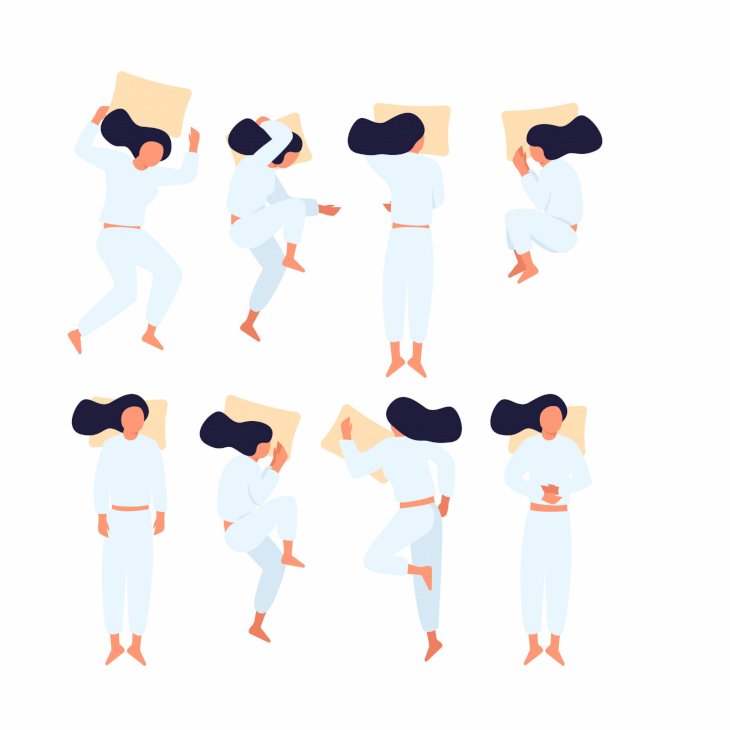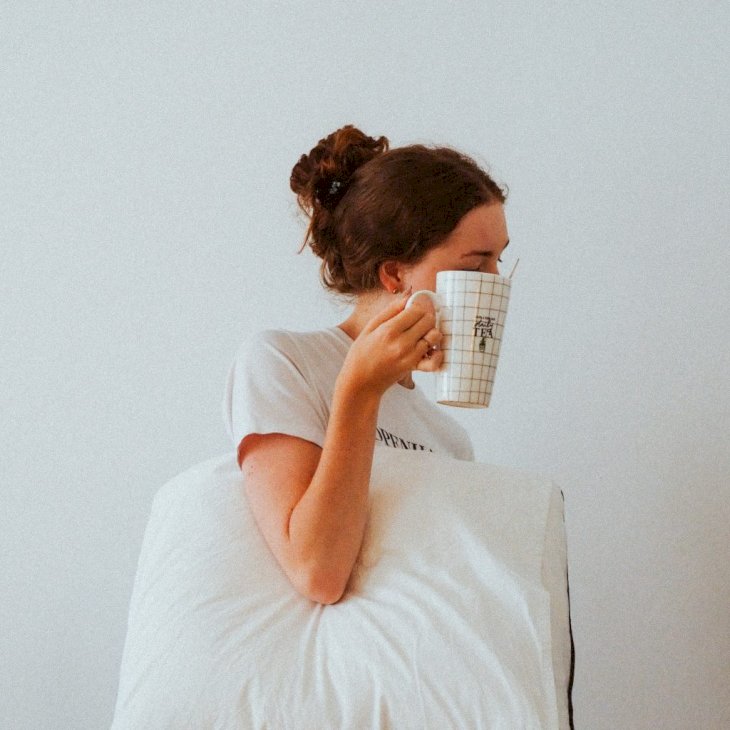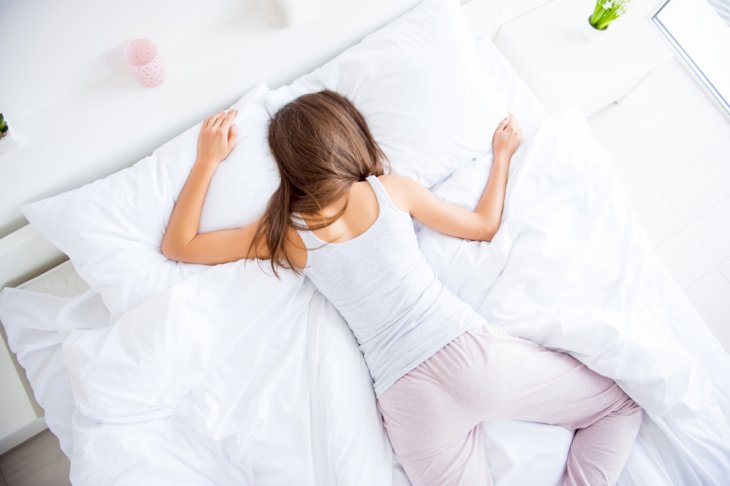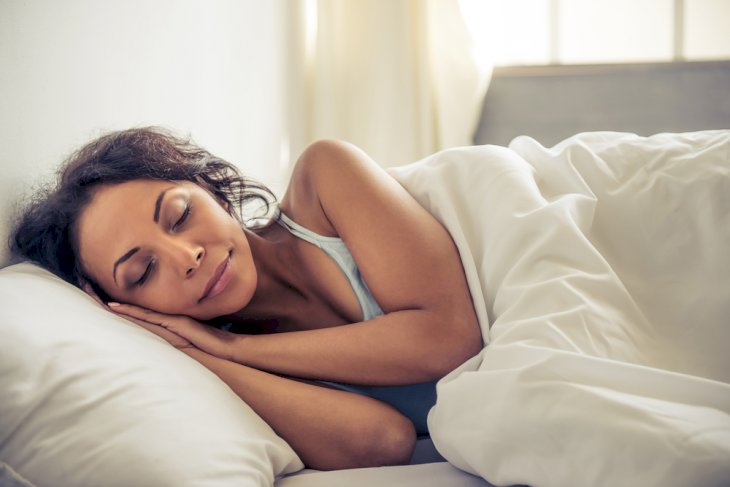
Unpacking The Best And Worst Sleeping Positions For Your Facial Skin
Getting enough sleep is part of the recipe that gets you looking and feeling good, and when you're not sleeping right, it tends to show.
So there's you, doing all the "right" things; removing your makeup before bed, going through your nightly regimen in the evenings, and drinking your water, but somehow you're still waking up looking tired. Of course, there are many reasons why you still might look and feel tired when you wake up, including that you're sufficiently rested, your pillowcase needs a wash, or that go-to glass of wine you enjoy before you doze off is compromising the quality of your sleep.
Or your sleeping position might be to blame for the lackluster experience, despite getting your full eight hours' worth of Zs.
Sleeping Positions

Shutterstock
Everyone has their preferred sleeping position, whether you're a face-up or fetal position type. People often revert to their favorite sleeping position out of comfort but did you know that the way you sleep can also affect your facial skin.
Konstantin Vasyukevich, MD, a cosmetic doctor and facial plastic surgeon, explained to "Real Simple" the effect of lying down in a horizontal position on fluid distribution towards the upper body and what it means for your facial skin.

Photo by Laura Chouette on Unsplash
"Daily expansion and contraction of the facial tissue put a strain on the ligamentous support of the face. This eventually leads to stretching and sagging associated with an aged appearance."
Vasyukevich said.
While there are tons of sleeping positions that one might take, they can primarily be grouped into one of three. Here's which sleeping positions might be responsible for some of your skin woes:
Stomach Down

Shutterstock
Sleeping stomach down is classified as the least ideal sleeping position for your facial skin. Michael Breus, M.D, clinical psychologist and author of "The Sleep Doctor's Diet Plan: Lose Weight Through Better Sleep," noted to "Self" that sleeping on your stomach can be harmful to your back while also causing wrinkles.
Breus highlights how, in particular, the friction caused by having your face directly on the pillow can form lines and possible breakouts.
Sleeping On Your Side

Shutterstock
Sleeping on your side might be ideal for some other health concerns like some sinus problems, but this sleeping position is another culprit for some common skin concerns when it comes to your facial skin.
Side sleepers might find that fine lines might form on the side they tend to favor when sleeping. However, you might try to minimize the effect by opting for a silk or satin pillow.
Sleeping On Your Back

Shutterstock
Sleeping on your back, face-up is regarded as the ideal sleeping position for your facial skin because there's minimal pressure and friction.
It's advised to keep your head elevate, perhaps with an additional pillow to reduce the amount of fluid that may gather in the eye area, which might cause puffy eyes.